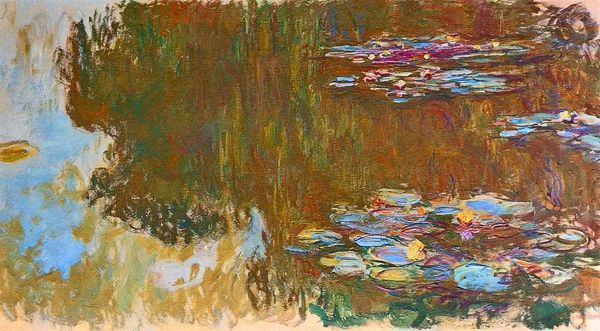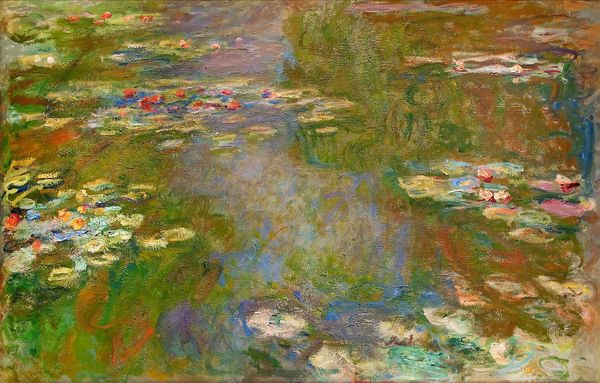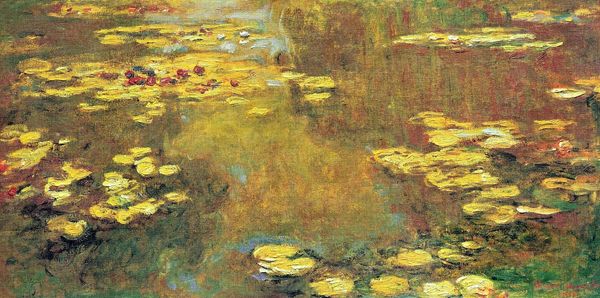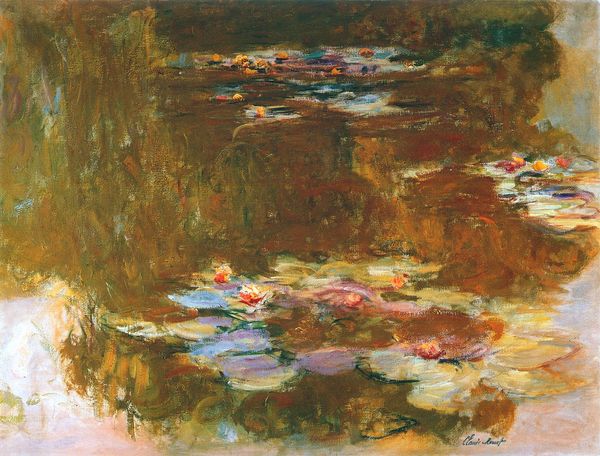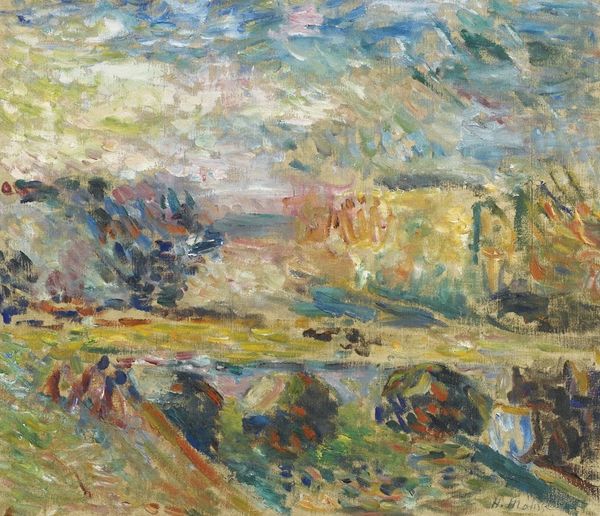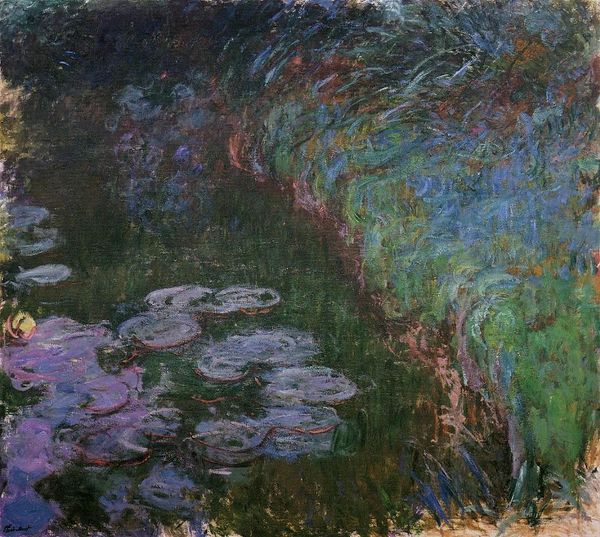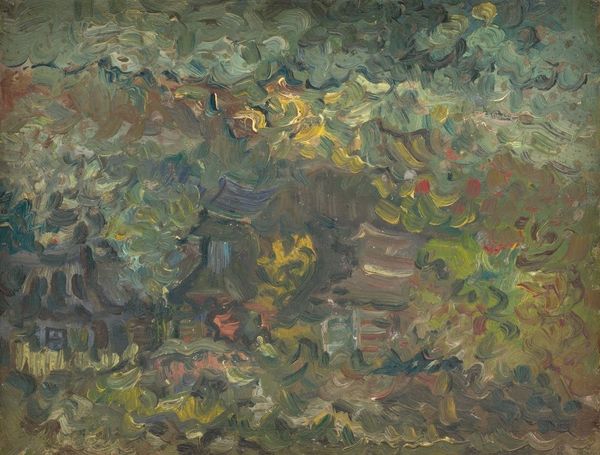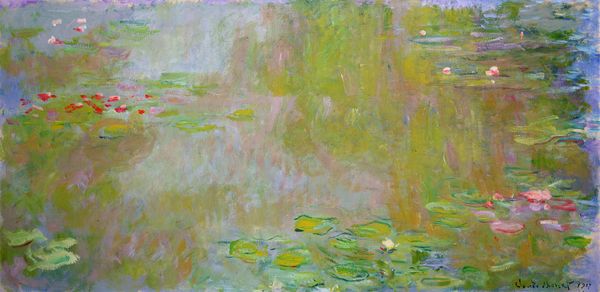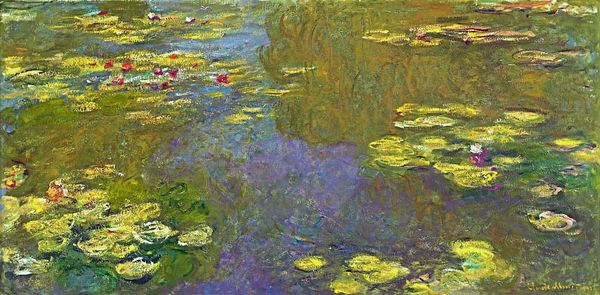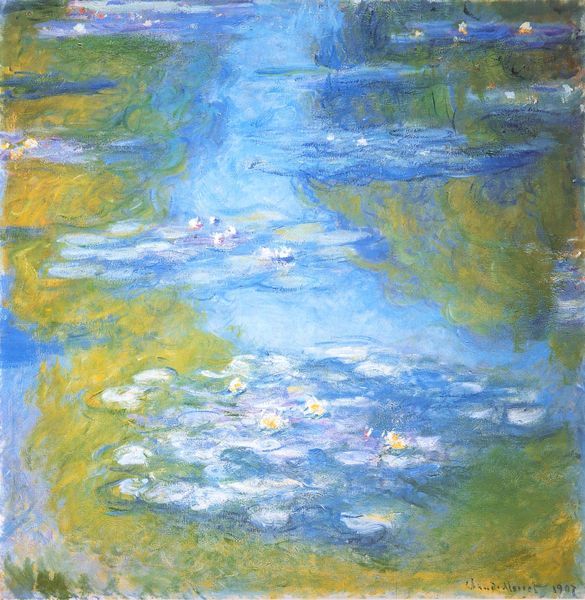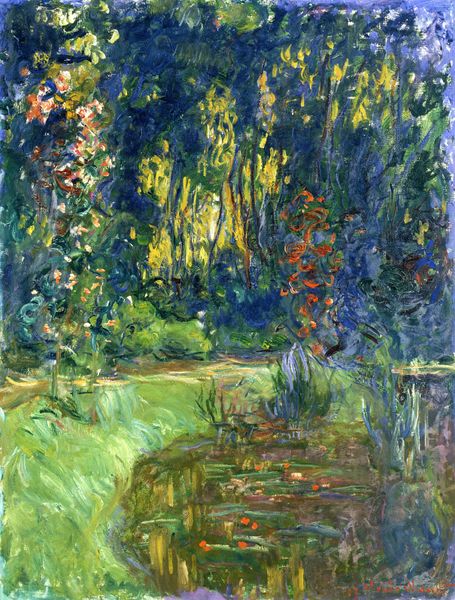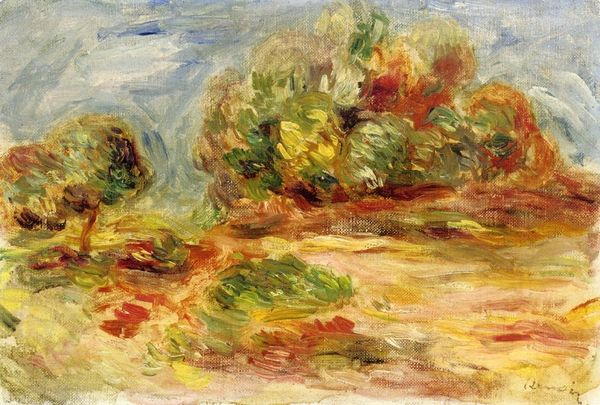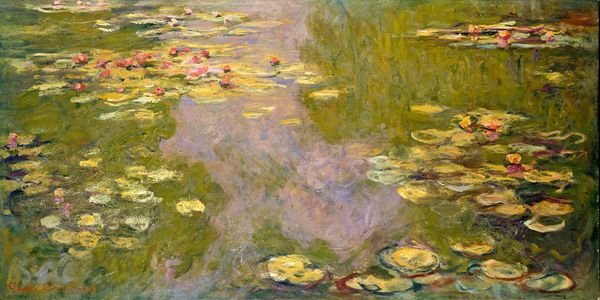
plein-air, oil-paint, watercolor
#
impressionism
#
plein-air
#
oil-paint
#
landscape
#
impressionist landscape
#
oil painting
#
watercolor
#
monochrome
Copyright: Public Domain: Artvee
Curator: Here, we have Claude Monet’s “The Water Lily Pond,” thought to be painted between 1917 and 1919. What’s your first take? Editor: I'm struck by the pervasive blurring of edges. Everything seems to melt into everything else—almost dreamlike in its imprecision. Curator: Indeed. This canvas offers a beautiful distillation of Monet's late-period concerns, fully entrenched in Impressionism’s visual language and philosophy. Look at how Monet’s practice moved toward dissolving form, prioritizing the effects of light and color on the water lilies themselves. He captures the fleeting sensation more than the solid object. Editor: Precisely! This work highlights Monet's shift from depicting the motif to becoming fully absorbed in the sensory impression it creates. Considering this series was produced toward the end of his life, there’s something inherently moving about witnessing this kind of aesthetic introspection during a time when war, destruction, and loss of life was on full display. It can be interpreted as his form of resistance: doubling down on beauty and contemplation in times of strife. Curator: I agree entirely. And notice how he nearly abandons a traditional, structured composition, emphasizing the surface of the canvas through layered strokes of paint. Semiotically speaking, each stroke is as important as the water lily, becoming equal within the artwork’s syntax. Editor: It also prompts me to consider the audience’s experience. Public galleries often situate his larger water lily murals in oval-shaped rooms—enveloping the spectator entirely, inviting one into that sensorial realm and suggesting new models of spatial and bodily experience for early 20th-century society to explore. Curator: An incredibly important point! When experienced en masse as Monet intended, they present a totalized experience of natural and painted environments becoming inseparable. Editor: Yes, making visible, if only fleetingly, the artifice of nature in its ideal form! Well, I'm glad we’ve given listeners some points for further thought and exploration here. Curator: It was quite revealing for me, thank you for your stimulating discussion!
Comments
No comments
Be the first to comment and join the conversation on the ultimate creative platform.
